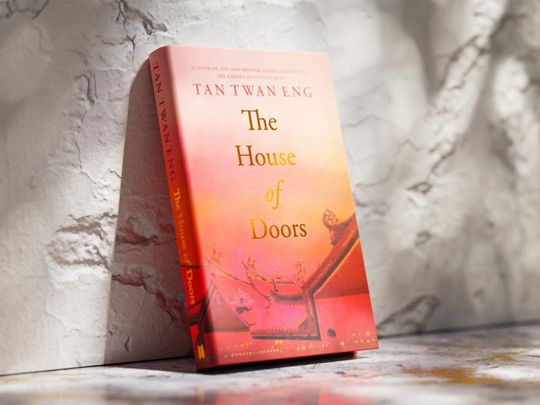
‘The House of Doors’ by Tan Twan Eng presents a captivating narrative that intricately weaves together the worlds of literature, love, and intrigue.
Set primarily in 1921 Penang, in the Federated Malay States, the novel delves into the two-week sojourn of the renowned writer W. Somerset Maugham at the waterfront residence of his friend Robert Hamlyn and his wife Lesley.
Maugham, a central figure in the story, seeks respite from his physically demanding travels across Asia and an escape from his London wife, whom he regrets marrying.
However, the supposedly relaxing visit takes an unexpected turn as Maugham, ever the keen observer, unravels the complexities of the Hamlyns’ lives.
Lesley, stuck in an unhappy marriage with Robert, grapples with his deteriorating health and a proposition to move to a sheep farm in South Africa. Maugham suspects deeper secrets, particularly an alleged affair with the Chinese revolutionary Sun Wat Sen.
Turning experiences into literature
The lushly atmospheric narrative, longlisted for the Booker Prize, immerses readers in the vibrant landscapes of 1920s Penang.
Tan’s descriptive prowess vividly paints scenes of the setting, and the various servants populating the setting. However, at times, the prose ventures into excessive embellishment, detracting from the overall beauty of the narrative.
The novel skilfully intertwines risky interracial love stories, a scandalous murder trial, and a celebration of the transformative power of literature.
As Lesley reveals her secrets to Maugham, risking her marriage and betraying a friend, the narrative explores themes of human weakness, hypocrisy, and the art of turning life experiences into compelling literature.
Weaving tales within tales
Tan’s audacious manipulation of Maugham’s stories adds another layer of intrigue to the novel. Through Lesley’s confessions, the reader witnesses a clever blend of reality and fiction, where names and details from Maugham’s works enrich the narrative of ‘The House of Doors.’ This manipulation, a testament to Tan’s ingenuity, delves into how literature works its magic by weaving tales within tales.
The novel also touches on significant elements, such as the symbolism of the titular doors and the musical composition based on Verlaine’s poem. As the story unfolds, it becomes a captivating exploration of love, betrayal, and the multifaceted nature of truth.
In a dual-narrator approach, Willie Maugham and Lesley Hamlyn provide contrasting perspectives on colonial Penang, offering insights into the privileged white world and the tumultuous events that shape their lives. Lesley, facing the upheaval of her marriage and life in Penang, finds a sense of liberation in the secrets she unveils.
Eng’s ambitious project, drawing from Maugham’s Casuarina Tree, explores the artist’s quest for inspiration, the complexities of patriarchy, and the masks individuals wear to navigate societal expectations. The novel masterfully unfolds layers of deception and self-discovery, questioning the authenticity of appearances.
‘The House of Doors’ ultimately serves as a compelling testament to Tan Twan Eng’s storytelling prowess, combining historical elements, literary manipulation, and thematic richness to create an enchanting and thought-provoking novel.
Ahmad Nazir is a UAE based freelance writer






